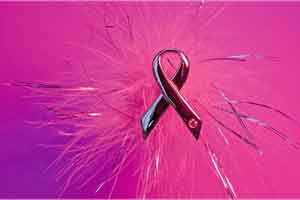Breast Cancer Patients Over 60 with Luminal a Subtype May Not Need Radiation if Already on Hormone Therapy
 Women with luminal A subtype breast cancer – and particularly those older than 60 – may not need radiation treatment if they are already taking hormone therapy, shows clinical research led by radiation oncologists at the Princess Margaret Cancer Centre published online today in the Journal of Clinical Oncology.
Women with luminal A subtype breast cancer – and particularly those older than 60 – may not need radiation treatment if they are already taking hormone therapy, shows clinical research led by radiation oncologists at the Princess Margaret Cancer Centre published online today in the Journal of Clinical Oncology.
The findings potentially advance delivery of personalized cancer medicine for up to 25% of women diagnosed with breast cancer in North America every year, say co-principal investigators Dr. Fei-Fei Liu, Chief, Radiation Medicine, and Dr. Anthony Fyles, staff radiation oncologist. Dr. Liu is Chair, Department of Radiation Oncology, University of Toronto, where Dr. Fyles is also a Professor. In Ontario alone, they estimate, this could save the provincial health care system up to $3 million annually. Drs. Liu and Fyles talk about their research in the following video
They stress, however: “For all other breast cancer subtypes, radiation therapy is definitely of benefit and the required treatment.”
Drs. Liu and Fyles examined tumour specimens from participants in a prior randomized clinical trial who received either tamoxifen (hormone therapy) plus whole-breast radiation therapy, or only tamoxifen.
The research team analysed molecular biomarkers in these samples which were then classified into six subtypes. The results demonstrated that women in the luminal A subtype had the best outcome, with a 10-year risk for local relapse of 8 percent with tamoxifen alone versus 4.5 percent with both tamoxifen and radiation.
The relapse rate was even lower for luminal A patients older than 60 – 4.3 percent with tamoxifen alone, versus 6 percent with tamoxifen plus radiation.
“For luminal A women over 60, local breast radiation did not add benefit to their outcome,” says Dr. Liu.
Luminal A is defined as ER-positive, PR-positive, HER2-negative and low Ki-67 (an indicator that breast cancer cells are slowly growing, dividing or proliferating).
Three years ago, based on these findings, which Dr. Liu presented at the American Association for Cancer Research annual meeting, the researchers recommended that a larger prospective clinical study was the needed next step to validate that routine testing for Ki-67 should take place. That study is now under way.
“This prospective clinical study, under the auspices of the Ontario Clinical Oncology Group, is enrolling 500 participants over three years from 15 cancer centres across Canada,” says Dr. Fyles, who is principal investigator for the Princess Margaret.
“Post-menopausal women aged 55 or older with luminal A subtype breast cancer who are interested in participating should ask their treating physician if they are eligible for this study.”
Source Newsroom: University Health Network (UHN)
Citations
Journal of Clinical Oncology

